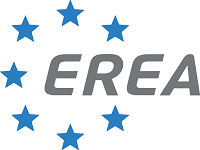
Urban Air Mobility (UAM) has gained popularity in the past decade as the
next revolution for mobility. It promises to be a more efficient and sustainable form of
transport, using the unutilized airspace in urban environments to improve services and
mobility. It promises to contribute to a climate-neutral air transport system, without
compromising on safety and security and while respecting societal concerns about noise and
pollution.
But how can UAM system and solutions be designed and demonstrated to be
the efficient and sustainable mode of transport it is advertised to be?
In the following three workshops, different aspects are presented, that need to be
considered for UAM to become a reality, in the current societal context focused on
sustainability, efficiency, and social acceptance. The workshops aim at creating
awareness of the challenges embedded in UAM and identifying possible solutions to be
investigated further, in a collaborative spirit that includes universities and research
establishments, all other aviation stakeholders, and the citizens.
The structure of the UAM Workshops will be on the basis of an interactive conversation
among participants which will pave the way forward and will provide food for thought for
the next steps. If you want to attend please send your interest to:
info@easnconference.eu with short feedback regarding your background and technology
Interest (by Monday the 17th of October), so as for the discussion to be adjusted
respectively.
More specific information regarding each one of the workshops can be found below:
Workshop I: Scaled Demonstrators • Chairman: Dr.-Ing. Christian Eschmann
(DLR)
In aeronautical research, infrastructures make an essential contribution to
technology development. For decades, classic large-scale facilities, such as wind tunnels,
have been used for this purpose, but recently simulators of all kinds or entire
high-performance clusters have also been increasingly employed. Since the construction and
maintenance of such facilities are very personnel- and cost-intensive, the European
Commission has been pursuing a more efficient and uniform approach for infrastructures
across Europe. In the case of UAM, these are primarily UAS (unmanned aerial system)
test centers for conducting extensive flight test campaigns. In this context, scaled
demonstrators are becoming an increasingly important tool for flight tests, as well as for
design and validation.
Scaled demonstrators are scaled-down models of the intended future aircraft and serve as
realistic flight test vehicles. However, this is not only about low TLR research, but also
about the scaled testing of individual technology components (such as sensors), through
sub-systems to entire systems.
In the workshop, the entire spectrum of potential applications for scaled demonstrators
will be presented - from current, existing test vehicles to possible future
configurations.
Workshop II: Future Energy Sources for Aviation • Chairman: Mr. Marcello Kivel Mazuy
(CIRA)
Hybrid Electric Propulsion (HEP), H2 and in general Sustainable Aviation Fuels (SAF)
are widely considered as the most promising and sustainable solutions for an
energy-efficient, green and quieter aeronautical propulsion. Despite this, several goals
must be still achieved to make these technologies viable. In particular, the propulsion
system integration into the A/C and the overall feeding system, including new challenges as
electric and thermal Management, are key issues to be solved for an acceptable technology
shift. Also, we can just think for example of the ‘weight issue’.
However, the ‘greening’ effect of future energy sources for aviation implies new challenges.
If CO2 emissions of aviation are well established and their impact on climate (radiative
forcing) can be reasonably well quantified, non-CO2 impact and noise might be considered as
well. In general, for current air transport applications non-CO2 emissions impact (NOx,
contrails) on radiative forcing remains widely uncertain (but know as significant) and noise
issues for new disruptive configurations also to be assessed. These uncertainties become
more important for the new and unknown future UAM scenario.
For example, what about the psychological effects of this new swarm noise above people
heads? What is the increased level of humidity due to the water vapor, and consequent
combination with other exhausts, in the city?
The overall scope of the workshop is to assess in an ideal urban context such innovative
propulsion solutions, both in terms of technologies and configurations, on a wide
spectrum, from applicability to safety/security till social acceptance issues, by
thinking outside the box with fresh and open-minded academic skills. Potential links
with a circular approach and sca demonstration will be also addressed in order to
provide additional food for thoughts for the other workshops.
Workshop III: Circular Aviation System • Chairwoman: Mrs. Ligeia Paletti
(NLR)
There is currently a lot of buzz around “Circular Economy”, especially following its
connection with the EU Green Deal. Yet, what Circular Economy really means and entails are
aspects still elusive for many. In general, it is thought that Circular Economy has
“something to do with” recycling: recycling of materials (like recycled plastic). In some
cases, Circular Economy has “something to do with” reusing things: second hand products or
finding new uses for parts (like chairs from car seats).
Circular Economy encompasses those aspects and more. Circular Economy is defined as a
“system solutions framework”. When the system considered is Aviation, the Circular Economy
becomes one framework to define solutions which will contribute to the goal of
climate-neutral aviation by 2050 and to the other goals expressed in the ACARE Vision.
In this workshop, the participants will take an active role in creating an ideal (UAM)
Air Transport System which is circular and in alignment with the goals of the EU Green
Deal.